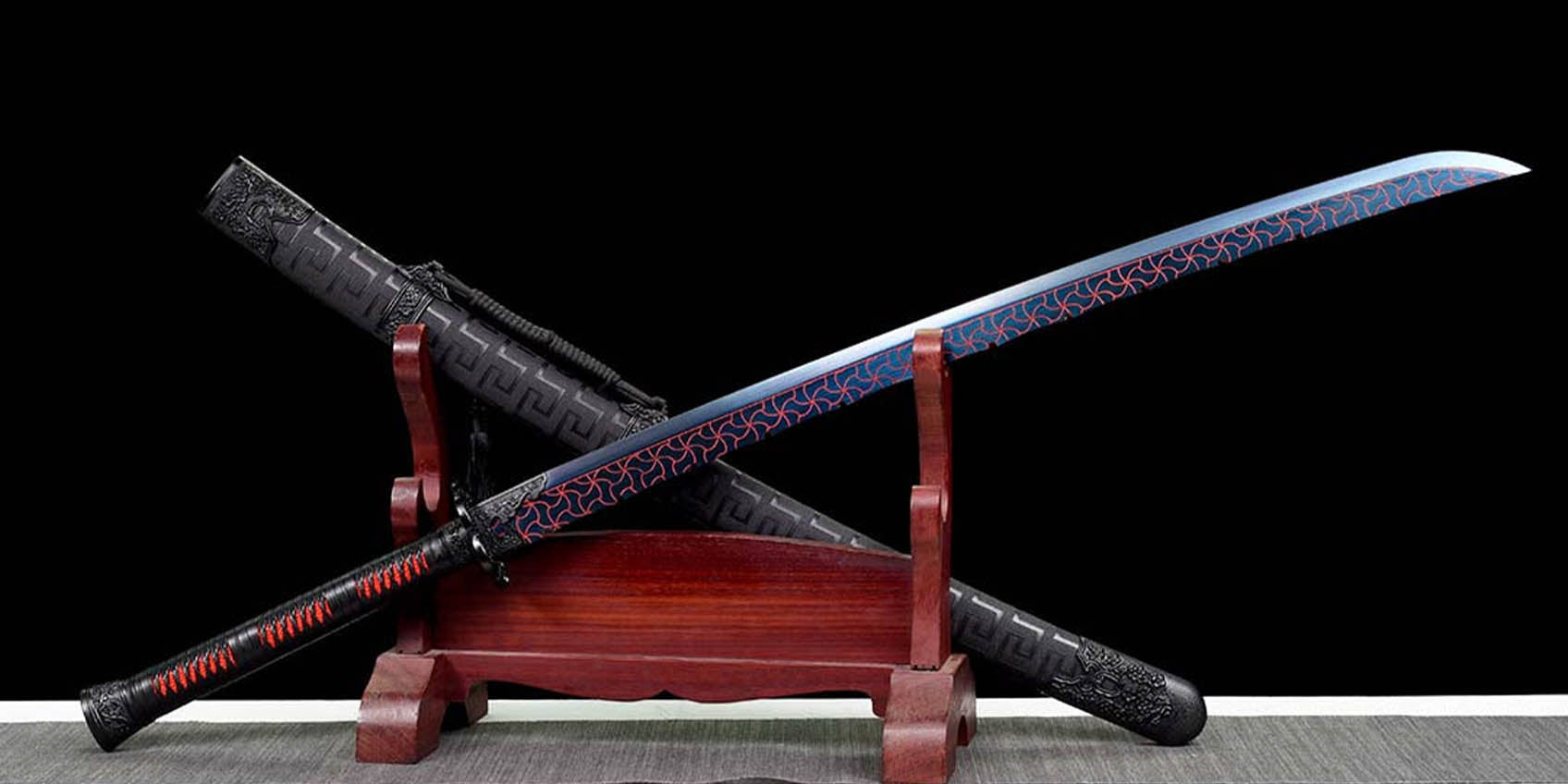Chinese Tang Dao: The Pinnacle of Historical Craftsmanship

What Is Dao in Chinese? Chinese Dao -Dao Sword
The Chinese Tang Dao is a high-quality dao sword that represents the pinnacle of historical craftsmanship. With its single-edged blade and refined design, it embodies the balance of yin and yang, making it a favored weapon in martial arts. Unlike other curved blades, the Tang Dao features a slightly straighter edge, influenced by earlier sword designs. During the Qing Dynasties, different variations of the dao sword were widely used by warriors, evolving into a key symbol of China's rich martial heritage.
Forged from carbon steel, Chinese dao swords like the Tang Dao are not only powerful weapons but also a true work of art reflecting ancient craftsmanship.
The Chinese Tang Dao, known for its elegant design and roots in Chinese martial arts, often features wider blades for powerful, sweeping strikes. One notable variation, the willow leaf saber, was widely used during the Ming and Qing dynasties, showcasing both battlefield efficiency and artistic refinement. With its balanced overall length, the Tang Dao embodies the pinnacle of historical craftsmanship, merging function with the legacy of Chinese warrior culture.
The ninjato typically features a straight blade and a simple square hand guard, designed for practicality and swift movements in stealth-based combat.
Tang Dao: The Pinnacle of Historical Craftsmanship
The Tang Dao is a collective term for the four types of military swords used during the Tang Dynasty in China, not referring to any single specific sword. The Tang Dao holds a significant place in the history of cold weapons, not only due to its exceptional lethality and exquisite craftsmanship but also because it represents the military power and cultural essence of the Tang Dynasty. This article will provide a detailed introduction to the origins, craftsmanship, and historical impact of the Tang Dao.
The Origins and Development of Tang Dao
The origins of the Tang Dao can be traced back to the Han Dynasty's Ring-Pommel Sword (also known as Han Dao). The Han Dao was typically wielded with one hand, featuring a shorter sword handle, with lengths ranging from 58 to 114 centimeters. The handle of the Han Dao was characterized by a flat, round ring, known as the pommel of the sword, giving it its name.
Building on this design, the Tang Dao introduced several improvements, such as removing the flat ring, widening the blade, and extending the handle to allow for two-handed use. These modifications led to a significant leap in both the appearance and combat effectiveness of the Tang Dao, making it a crucial weapon of its time.
The Craftsmanship and Lethality of Tang Dao
The Tang Dao was forged from Hundred-Refined Steel, undergoing high-temperature treatments and multiple rounds of hammering, which gave the blade extraordinary hardness and toughness. The Tang Dao combined at the highest level of purity, making it capable of easily cutting through steel bars and slicing through armor. Its immense lethality made it one of the most formidable cold weapons.
The blade of the Tang Dao is primarily straight, though later designs introduced slight curvature, which is much less pronounced compared to Japanese sword sabers like the Katana. The blade tip of the Tang Dao comes in two styles: Kiriha Zukuri (cutting edge) and Moroha Zukuri (double-edged). The cutting edge is a sharp diagonal line, while the double-edged tip resembles that of a sword. Initially, the Tang Dao lacked a guard, but later versions included guards similar to those found on traditional Chinese swords.
Compared to the tsuba (guard) of the Japanese Katana, the guard of the Tang Dao resembled a crossguard that stood perpendicular to the blade. The sharp edge of the Tang Dao typically occupies less than one-third of the blade’s width, providing high armor-piercing capabilities in battle. The sword parts such as the sword handle and the pommel of the sword were designed with precision to ensure the sword's balance and effectiveness.
The Historical Impact of Tang Dao
The Tang Dao not only held an important position in Chinese history but also had a profound influence internationally. During the Tang Dynasty, the Tang Dao was introduced to Japan. Although the Japanese had already mastered the forging techniques of the Han Dao, they were still amazed by the Tang Dao, believing that only China could produce such finely crafted weapons.
Japan quickly adopted and improved upon the Tang Dao's forging techniques, leading to the development of the Japanese Katana, now recognized as one of the world's three great swords. The Tang Dao became more than just a weapon; it became a highly respected name sword known throughout Asia.
However, after the Tang Dynasty, the craftsmanship of the Tang Dao gradually faded into obscurity. Even with modern sword forge techniques, it is challenging to replicate a true Tang Dao. This loss of knowledge has rendered the Tang Dao a symbol of an era in Chinese history that can no longer be recreated.
Conclusion
The Tang Dao symbolizes the military power and cultural sophistication of the Tang Dynasty, with its unparalleled craftsmanship and lethal power securing its place in the history of cold weapons. Although the techniques for forging the Tang Dao have been lost over time, its unique design and profound influence ensure that it remains a legendary weapon in Chinese history. If you are interested in ancient Chinese weaponry or historical culture, the Tang Dao is undoubtedly a subject worth exploring, especially for those fascinated by names for weapons and the intricate parts of a sword.
Handmade Quenched Blue Burnt Flower Blade Katana Sword Spring Steel Samurai Sword Full Tang
At some events, fans demonstrate their swordsmanship skills, paying tribute to anime's legendary battles. Conventions even hold swordsmanship competitions, letting enthusiasts showcase their passion and creativity with these iconic weapons. Certain anime weapons hold special significance for fans, influencing anime swordsmanship and sparking interest in related merchandise. Celebrations at various anime events further boost their popularity. These weapons symbolize strength and courage, leaving a lasting mark on the anime world.




